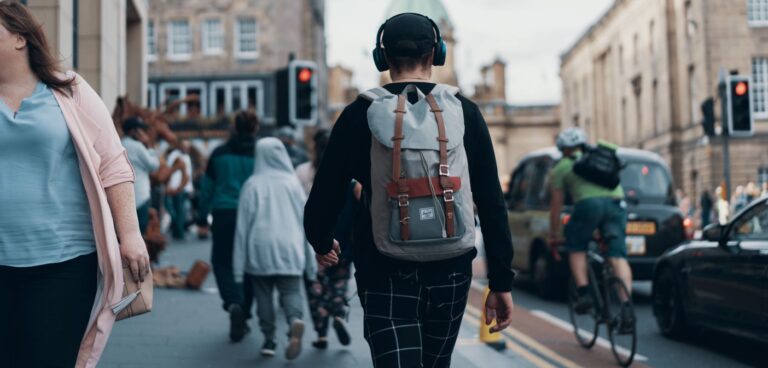Walking, wheeling and cycling in Edinburgh helped generate more than £186.2m in economic benefits while saving 38,000 tonnes in greenhouse gas emissions, active travel charity Sustrans has reported.
The Walking and Cycling Index, formerly known as Bike Life, is the biggest assessment of walking, wheeling and cycling in cities across the UK and Ireland, carried out by Sustrans. Results from Edinburgh showed 66% of residents walk at least five days a week – more than any other mode of transport and above the national average of 50%.
Annually, people choosing to travel by foot, wheel or bike helps take up to 150,000 cars off the road and saves the NHS more than £8.2m through the associated health benefits.
However, the Walking and Cycling Index also found that 70.7 million journeys up to three miles are still driven in Edinburgh each year.
Most respondents – 78% – said more shops and everyday services close to home would encourage them to walk and wheel more, while the same number supported the creation of more 20-minute neighbourhoods. The City of Edinburgh Council is in the process of developing a model for a network of 20-minute neighbourhoods across the city, where public transport and active travel are the best options for getting around and streets are designed for people, allowing them to easily access and support their local businesses and services.
Additionally, 23% of residents currently don’t cycle but would like to and 64% say more physically separated cycle lanes along roads would help them to cycle more, with access to secure cycle storage at or near home (57%) amongst other incentives to cycling. Several major cycling infrastructure projects are already underway or in the pipeline in Edinburgh, including the City Centre West to East Link (CCWEL) and the plans to remove traffic from George Street. The council has also rolled out 106 secure cycle parking hangars over the last two years, with a total of 180 hangars to be installed as part of the programme’s initial phase.
Daisy Narayanan, head of placemaking and mobility at the City of Edinburgh Council, said: “As ever, this report provides a fascinating snapshot of people’s walking, wheeling, and cycling habits – and the immense benefits active travel can bring, not only to our own health but the environment, the economy and the quality of life here.
“Transport currently accounts for just under a third of Edinburgh’s emissions and it’s clear that there’s an urgent need to aid and encourage more sustainable ways of travelling if we’re to meet our 2030 net zero target. Responses to the Walking and Cycling Index provide an excellent guide for the kind of changes we need to make – people are telling us what we need to do to help them to travel by foot, wheel or bike, particularly for shorter journeys.
“Thankfully, there’s already a great deal of work underway to support this. Our strategy for 20-minute neighbourhoods will mean people across Edinburgh can live well locally, meeting most of their daily needs from within their own community. The approach is designed to improve access to services where it is most convenient and helps to support local businesses, creating thriving, vibrant town and local centres.
“This is alongside investment of £108m over the next few years to transform walking, wheeling and cycling infrastructure across the Capital, as outlined in our ambitious City Mobility Plan, including the transformation of George Street, the delivery of CCWEL linking Roseburn to Leith Walk and the Meadows to George Street route.”
This Walking and Cycling Index Edinburgh is the fourth report of its kind produced by Sustrans in partnership with the City of Edinburgh Council. It draws on local walking and cycling data, modelling and an independent survey of 1,346 residents carried out from June to August 2021, following the lifting of Covid travel restrictions. In total, 9,681 people were surveyed in Scotland.





